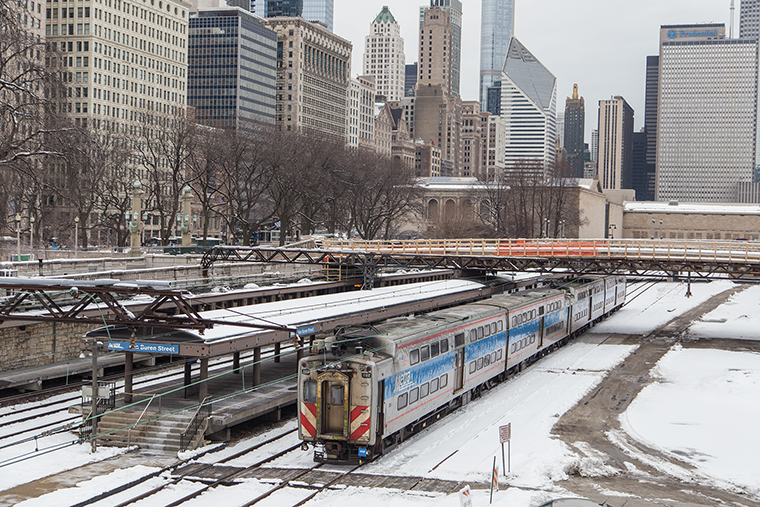Improvements to suburban transit could boost economy
Improvements to suburban transit could boost
March 17, 2014
Plans to improve the transit system in a western suburb could draw more people to the city and encourage economic development.
Melrose Park’s Broadway Avenue Corridor, located on Broadway Avenue from North Avenue to St. Charles Road, is slated for renovation with funding from the Regional Transportation Authority.
When a suburban community improves its transit system, it enhances city growth because public transportation is made available to more people who can travel to and from the city, said Brenna Conway, campaign director for the Active Transportation Alliance.
“If you renovate the station and provide good public transportation access to the station, a lot of people that live there [will] choose to take transit instead of driving,” Conway said. “When you have more people taking transit in the area, you also have more people walking and visiting things that are close by and it could be helpful to downtown.”
Accessing public transportation in Melrose Park will become easier as updates to the Melrose Park Broadway Avenue Corridor begin. The plan is to create a more inviting corridor by adding and improving bus shelters, creating parking lots, upgrading the aesthetics of existing parking areas and enhancing the Metra station, according to the RTA.
In February, the RTA approved an $80,000 grant to renovate the corridor, with federal funding accounting for the majority of it. Melrose Park will contribute an additional $20,000, according to a March 7 RTA press release.
Developing a plan for the corridor will take nine months and involve Melrose Park officials, business owners and residents, said Edwin Stoelinga, a Melrose Park engineer.
“Overall it’s really supposed to be a transportation coordination improvement plan,” Stoelinga said. “We will be looking at the whole corridor for things like Americans with Disabilities Act compliance, but also safety for the traveling public pedestrians, bus riders, bicyclists and [drivers].”
Transit agencies including Metra and Pace will benefit from the Melrose Park renovations because additional parking, improved pedestrian walkways, lighting and enhanced transit information will attract and retain riders, said Metra spokeswoman Meg Reile.
“Those projects are structured to increase and encourage transit ridership by making the environment more friendly and conducive to transit use,” Reile said. “I hope it encourages people to use our system.”
Reile said that although Metra ridership experienced a 6.3 percent decrease from 2008 to 2012 as a result of the Great Recession, she said renovating transit stations has the potential to increase ridership and help the transit company.
“Most of Metra’s riders are choice riders, meaning that they have other means of transport at their disposal for their work commute,” Reile said. “A project such as this corridor plan, which proposes to look at both streetscape and transit facility improvements, has the potential to draw riders to the city, and also turn the area into an economic center.”
The plan will also facilitate connections between Pace and Metra routes, said Pace spokesman Patrick Wilmot in an email. Pace has two bus routes that travel the entire corridor and two routes that cross Broadway Avenue on Lake Street and North Avenue.
“Better train [and] bus connections can reduce the demand for parking at the train station, meaning there’s more space for parks or other development,” Wilmot said. “Additionally, fewer people driving to the train station [could] mitigate traffic congestion and air pollution.”
The corridor development is in the early planning stages, but Sotelinga said Melrose Park officials are eager to see results from the study.
“It’s an opportunity to make some improvements at the local level that can benefit the entire region by improving connectivity and the relative ease of using public transit,” Wilmot said.








